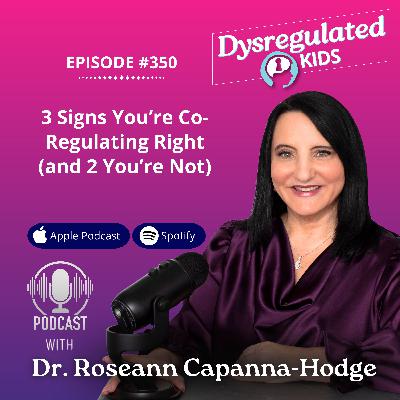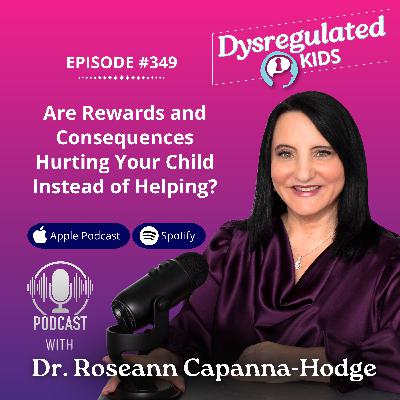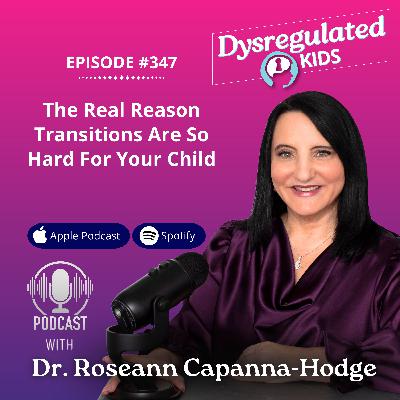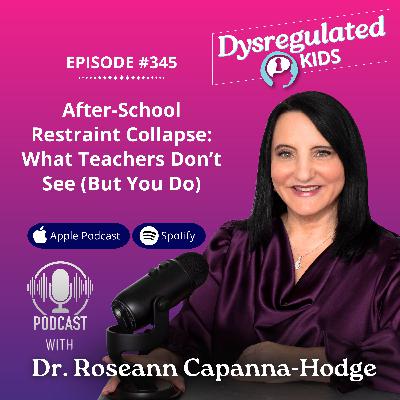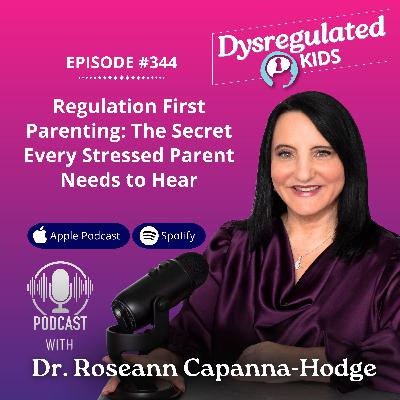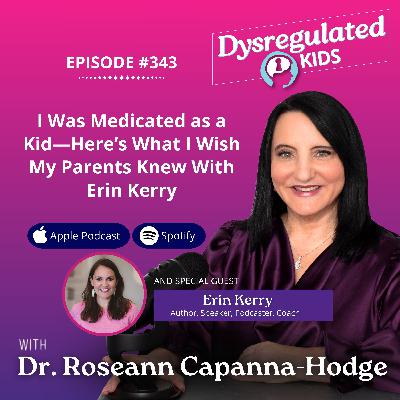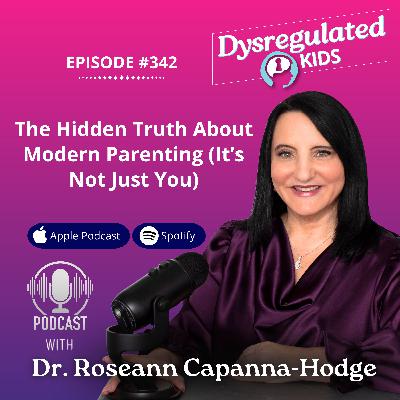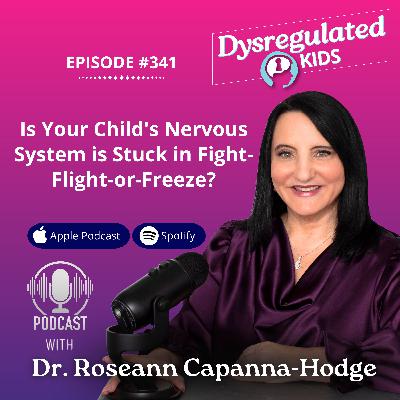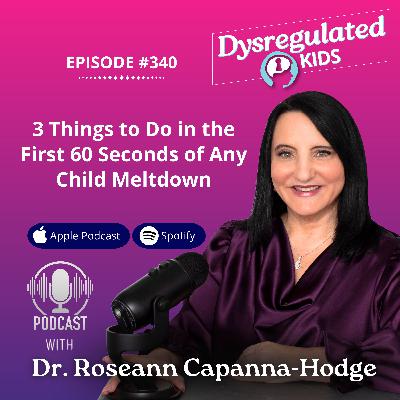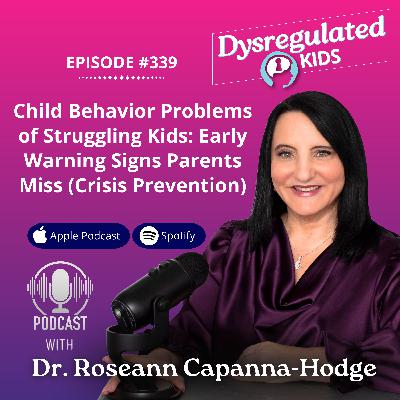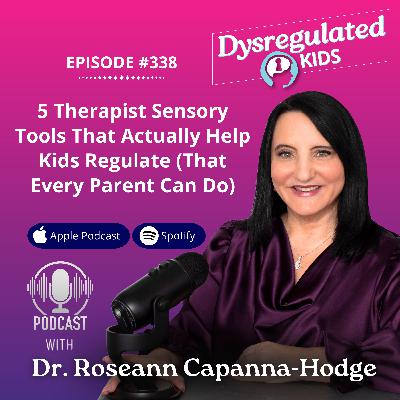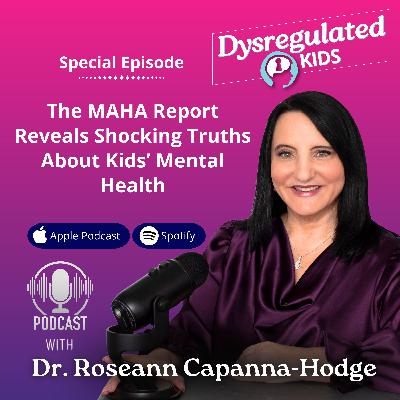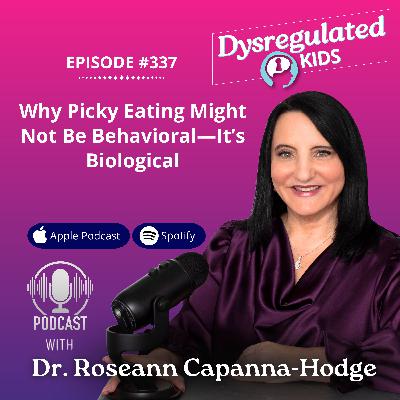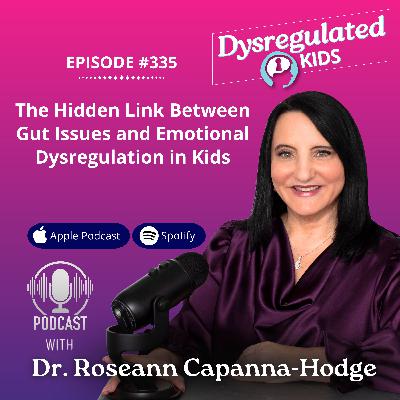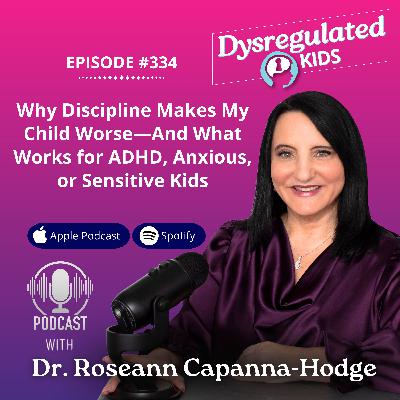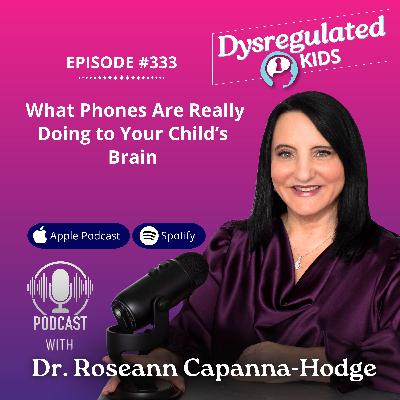350: 3 Signs You’re Co-Regulating Right (and 2 You’re Not)
Description
Co-regulation is one of the most powerful tools we have to help children learn how to manage emotions, but many parents wonder: Am I even doing it right? When your own emotions feel overwhelming and your child’s emotions are spilling over, it can be hard to know if what you’re doing is helping.
In this episode, I break down the signs you’re co-regulating effectively—and the red flags that mean you’re missing the mark. By the end, you’ll know how to create more emotional safety for your child, model healthy coping strategies, and begin to calm the brain first so that both self regulation and connection grow stronger, even in moments of emotional dysregulation.
How do I know if co-regulation is actually working?
When you’re practicing co-regulation, look for these green lights:
- You pause before reacting—even if you’re still triggered inside. That moment of not reacting right away wires calm into your nervous system and models it for your child.
- Your child returns to baseline faster. Meltdowns don’t magically disappear, but recovery time shortens when your child feels emotional support.
- You’re less reactive and more present. Instead of personalizing your child’s behavior, you can stay grounded and focus on connection.
These are powerful signs you’re co-regulating right, even if the journey is messy. Remember: behavior is communication, not misbehavior.
Why does my child stay upset for so long?
Parents often worry: Why can’t my child just “get over it”? The truth is, dysregulated kids get stuck in stress responses.
When co-regulation is working, you’ll notice:
- Less escalation over time—strong emotions are still there, but the intensity fades faster.
- More trust and closeness after difficult moments. Your child feels safe knowing you didn’t “hold it against them.”
- Children begin to use their own words and tools. Over time, kids copy what you model: deep breathing, naming feelings, and even humor.
Emotional regulation isn’t instant. It’s about progress, not perfection.
Am I making mistakes with co-regulation?
Yes—every parent does. The key is knowing what might get in the way:
- Performing calm instead of being calm. If you’re smiling on the outside but resentful or tense inside, kids feel it in your body language, tone, and facial expressions.
- Rushing to fix emotions. Instead of shutting down your child’s big feelings, ride the wave with them. That’s how children learn self-regulation skills and trust that emotions aren’t life-threatening.
If irritation or anger doesn’t ease over time, it may be a sign to get extra support for your own stress responses.
Yelling less and staying calm isn’t about being perfect—it’s about having the right tools.
Join the Dysregulation Insider VIP list and get your FREE Regulation Rescue Kit, designed to help you handle oppositional behaviors without losing it.
Download it now at www.drroseann.com/newsletter
What helps me co-regulate more effectively?
Parents can build co-regulation strategies into daily life by checking in with their own emotional states first. Try:
- Slow, deep breathing before approaching your child.
- Body scans—ask yourself, Where am I tense? Can I soften this?
- Eye contact and active listening to show emotional support.
- Repair after tough moments—apologies and reconnection are powerful tools for healthy relationships.
🗣️ “Children grow when they feel emotionally safe. When you regulate, your child learns how to self-regulate too.” – Dr. Roseann
Your child can’t find calm if you’re running on empty. Quick Calm gives you simple, powerful tools to reset your own stress responses so both you and your child can regulate and reconnect.
What if I mess up?
Here’s the powerful message: you don’t have to get it right 100% of the time.
- 80% is enough. Kids need you to be consistently calm most of the time, not perfect.
- Repair matters more than perfection. Connection after conflict wires safety into the brain.
- Modeling calm rewires both brains. Every time you regulate your own feelings, you show your child what’s possible.
Co-regulation matters because it teaches children how to regulate emotions through your example.
Every pause, every deep breath, every calm response wires safety and resilience into your child’s nervous system. So don’t focus on perfection—focus on progress.
When your child is struggling, time matters.
Don’t wait and wonder—use the Solution Matcher to get clear next steps, based on what’s actually going on with your child’s brain and behavior.
Take the quiz at www.drroseann.com/help
FAQs
What is co-regulation in parenting?
Co-regulation is when you calm your own nervous system so your child feels safe enough to settle theirs. It’s the foundation for teaching kids self-regulation skills.
How do I know if I’m co-regulating right?
You’ll notice shorter meltdowns, less escalation, and more closeness after tough moments. If your child bounces back faster, that’s a clear sign it’s working.
Why does my child still have big emotions?
Big feelings don’t disappear overnight. With consistent co-regulation, your child learns how to ride those waves more safely and return to calm sooner.
What if I lose my cool?
It’s normal. Repair is more important than perfection. Apologize, reconnect, and try again—your child learns resilience through your example.

